Jordan is a country in the Middle East well-known and home to more than 100 000 prehistoric, archeological and monumental buildings, with beautiful and scenic landscapes.
The country has many medieval castles, each one with its own wonders and history that are to be discovered.
The castles were made mainly of lava, sandstone, black basalt, and limestone.
The Seven Most Beautiful Castles in Jordan
1. Amman Citadel
The Amman Citadel is a castle, an architectural site built between AD 162 to 166 on top of the highest hill in the heart of Amman.
The castle was built by Abdel-Malik Ibn Marwan to be used as a reception hall where he would have meetings with his army leaders and expeditions.
Amman Citadel is one of the most famous historical sites in all of Amman and Jordan.
There is not only the castle to see, but also other significant landmarks all in one site, such as a piece of the Hercules statue that would have stood at the temple of Hercules dating back to 160 B.C and built by merchant Marcus Octavius Herrenus as a thank you to Hercules for saving him from the pirates.
Furthermore, there is the Umayyad Palace, which Abdel-Malik Ibn Marwan built.
He used the hall to have meetings with his expeditions and army leaders.
The palace is now mainly in ruins but is still accessible through the dome entrance that has been restored.
Lastly, the Roman theater was a man-made structure in 5 B.C. built by the Romans to honor the gods.
The theater would be used as an entertainment site where there would be plays held reenacting various stories of history, singing, and dancing.
Today, the theater continues to be used for hosting concerts in Jordan’s summertime.
2. Al Karak castle
The Al Karak castle, located in Al Karak, Jordan, is a large medieval-style castle.
Construction of this castle began sometime in the 1140s.
It is considered to be one of the largest castles in the Levant.
It was constructed under the King of Jerusalem, Pagan, and Fulk.
It originally started out as a crusader stronghold but later became a Mamluk fortress.
There are various boards in and around the structure that highlight the functions of that particular section of the structure to visitors.
The structure can be entered through the Ottoman gate at the top.
Be mindful as strong winds can make the climb quite challenging.
Renovations and excavation work are constantly being done on the castle.
The structure is an excellent example of military architecture.
This castle and area were considered to be one of the primary settlements of the ancient Kingdom of Moab.
There is scripture written about the palace in the Old Testament of the Bible which states that the King of Israel and his allies besieged the castle.
It is believed that the sacrifice of King Mesha’s firstborn son helped to avert the defeat.
The castle that visitors are able to view today, however, was built by the Crusaders sometime in the 12th century.
The castle underwent a serious amount of renovations and fortifications after the 13th century.
3. Shobak Castle
Shobak Castle was built in 1115 by the Crusader Baldwin I of Jerusalem.
The Arabic name of the castle is Qal’at ash-Shawbak.
The castle was expanded on the eastern side of the Arabah Valley by the Mamluks.
Today, the castle is in ruins.
But, what remains of the castle sits on a rocky, conical mountain.
For those planning to visit the site, there are local guides at the gate ready to give visitors a guided tour of JD10.
The fortress stood strong and overcame many attacks from Saladin (Salah ad Din) over the years but did eventually succumb after an 18-month siege in 1189.
Mamluks occupied the fortress after the 14th century.
From this point on, many of the original structures erected by the Crusaders were built over by the Mamluks.
The current structure features two churches, one sits close to the entrance, and the other just past the watchtower.
It has a baptistery. In addition, there is an ancient well that is cut deep into the rock.
Visitors to the site are met by staff members who guard the entrance to the castle dressed as Saladin’s soldiers.
Not to worry, they are friendly and happily take pictures with tourists.
There have been talks in the pipeline about bringing the history of the castle back to life, but to date, nothing has been finalized.
4. Petra
Petra is situated in Jordan’s southwestern desert.
It is a world-famous archeological site and one of the most well-known tourist destinations in Jordan.
Petra is world-renowned because of its rock-cut architecture and water conduit system.
It made it onto the list as a castle, but it is so much more than just a single structure.
It is an entire city carved into the rock.
This area was the capital of the Nabataean Kingdom and dates back to 300 B.C.
It is also known as the Rose City because the castle cuts into pink sandstone bluffs.
The structure houses tombs and sanctuaries. It is very well known for its 45m-high Al Khazneh.
In 2007, Petra was named by UNESCO as one of the seven wonders of the world in 1985.
Although this is actually a city and not a castle, its structure and design lend it the title of a castle.
It is one of the oldest cities in the world but it was only discovered by the West in 1812.
One of the most interesting facts about Petra is that scientists have only discovered about 15% of it.
Most of the city is still underground waiting to be discovered.
This city was once a trade hub and linked two very important routes.
One was between the Red and Dead Seas and the other was between the Persian Gulf and Gaza.
It is one of Jordan’s biggest tourist attractions and attracts upwards of a million visitors each year.
5. Ajloun
Ajloun Castle is located near the ancient city of Jerash in Jordan.
The well-preserved hilltop fortress sits in the northwest of the country.
Visitors are spoiled with panoramic views of the surrounding area.
Saladin was the legendary Kurdish founder of the Ayyubid dynasty.
He bravely fought and beat many Crusaders in battle.
Saladin ruled over large parts of Upper Mesopotamia, North Africa, Egypt, the Levant, and the Arabian Peninsula.
Ajloun Castle was built by Saladin’s nephew and general, Izz al-Din Usama in 1184.
Saladin commissioned the construction of the castle.
It served a very important purpose.
It was meant to be used as a guard against invasions by the Crusaders.
It also had to protect two trade routes between Syria and Jordan.
For these reasons, the castle did not fall into ruin until the Ottoman Empire.
The structure was completed over 1,100 meters above sea level.
Visitors are spoiled with some of the most majestic views of Mount Herman in Syria and Lebanon, Palestinian cities, the Jordan Valley, and cities in the Occupied West Bank.
The Mumbaks came into power and the castle fell under their rule in the mid-13th century.
However, the structure was severely damaged in 1260 by the Mongols when they gained power.
After the Mumbaks regained possession of the castle, it underwent renovation and expansion.
Much of what is visible to visitors today was constructed and renovated by the Mumbaikars.
After an 1837 earthquake, the structure was abandoned. Prior to that, it was occupied by the Ottoman Empire.
Today, it is in ruins but still available for the public to visit and attracts many tourists each year.
6. Azraq
Azraq is a fortress that was constructed by the Romans in 200 CE.
It is located approximately 62 miles east of Amman.
The castle is most known for its connection with the Lawrence of Arabia.
Something that makes this castle structure so unique is that it is darker in shade than other historical structures in the area.
That is because it was built using locally sourced black basalt.
It’s this that gives the structure a slightly darker tint than the other structures.
The structure is strategically located at the only water source in a 7,000-square-mile radius.
In the year 1237, the castle was rebuilt by Ayyubid emir Izz ad-In Aybak into the structure that visitors are familiar with today.
The structure is mentioned in the autobiography of TE Lawrence, a British diplomat, in his book, the Seven Pillars of Wisdom. He speaks fondly of Azraq.
Today the castle is a major tourist attraction, especially the room where TE Lawrence occupied the structure for a time.
7. Amra
Amra castle was built in 743 by Caliph Walid II.
This is the only castle in the country of Jordan that has UNESCO World Heritage Site status.
It is believed that the purpose of the castle was to serve as a retreat for the Empire’s rulers when they were away from the busy city of Damascus.
The building consists of two parts: an entrance hall and a Hamman which is a bath complex.
The walls and ceilings of the structure are covered by frescoes that highlight naked women, hunting scenes, and rulers of the time.
There is little to no prohibition to these drawings as is required by Islamic law.
On the contrary, the drawings rely heavily on pagan and Byzantine influences.
Jordan Safety Overview
READ THE FULL REPORT: Jordan Safety Review
Safety Index: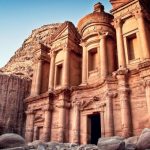
- OVERALL RISK: MEDIUM
- TRANSPORT & TAXIS RISK: MEDIUM
- PICKPOCKETS RISK: MEDIUM
- NATURAL DISASTERS RISK: MEDIUM
- MUGGING RISK: LOW
- TERRORISM RISK: HIGH
- SCAMS RISK: LOW
- WOMEN TRAVELERS RISK: MEDIUM
Frequently Asked Questions
Does Jordan currently have a monarchy?
Jordan has a parliamentary monarchy where the framework of its politics takes place.
There is a king.
He exercises power through parliament.
He is also responsible for selecting the parliament that will execute his wishes and commands.
The King has a major influence on the affairs of the country.
Why did the Arabs build castles in Jordan?
Castles in Jordan served various purposes, including being home to traders.
How many castles does Jordan have in total?
There are approximately six to seven castles in Jordan that are known as Crusader castles as they play a significant role in the history of Jordan and their fight against the Crusaders.
Does Jordan have a royal family?
Yes.
King Abdullah and Queen Rania rule Jordan and they have four children; Prince Hussein and Princess Iman as well as Prince Hashem, and a younger sister, Princess Salma.
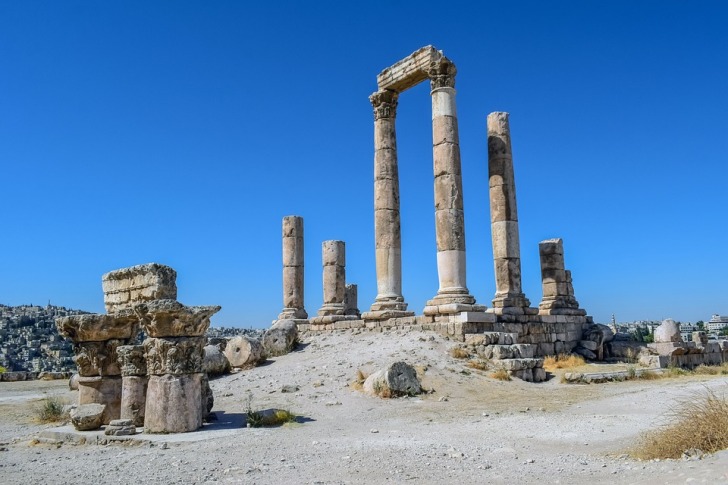
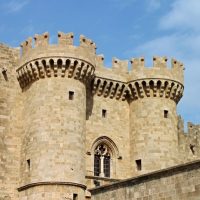
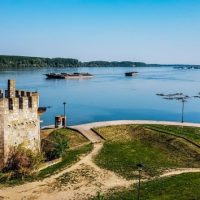

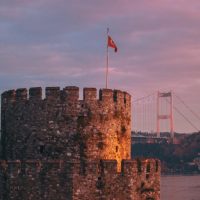
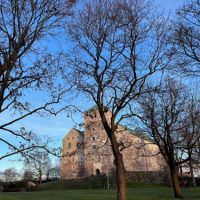






The Amman Citadel, with its rich history and stunning views of the city, is a must-visit for anyone interested in Jordan’s past; Al Karak castle offers an impressive example of military architecture while Shobak Castle provides insight into Crusader-era fortifications. Petra is simply breathtaking – it’s more than just a castle but an entire ancient city carved from rock! Ajloun Castle boasts panoramic vistas that are worth the climb alone, Azraq’s unique black basalt structure stands out among other historical sites and finally, don’t miss Amra castle – not only does it have UNESCO World Heritage status but also features fascinating frescoes unlike anything else you’ll see in Jordan.